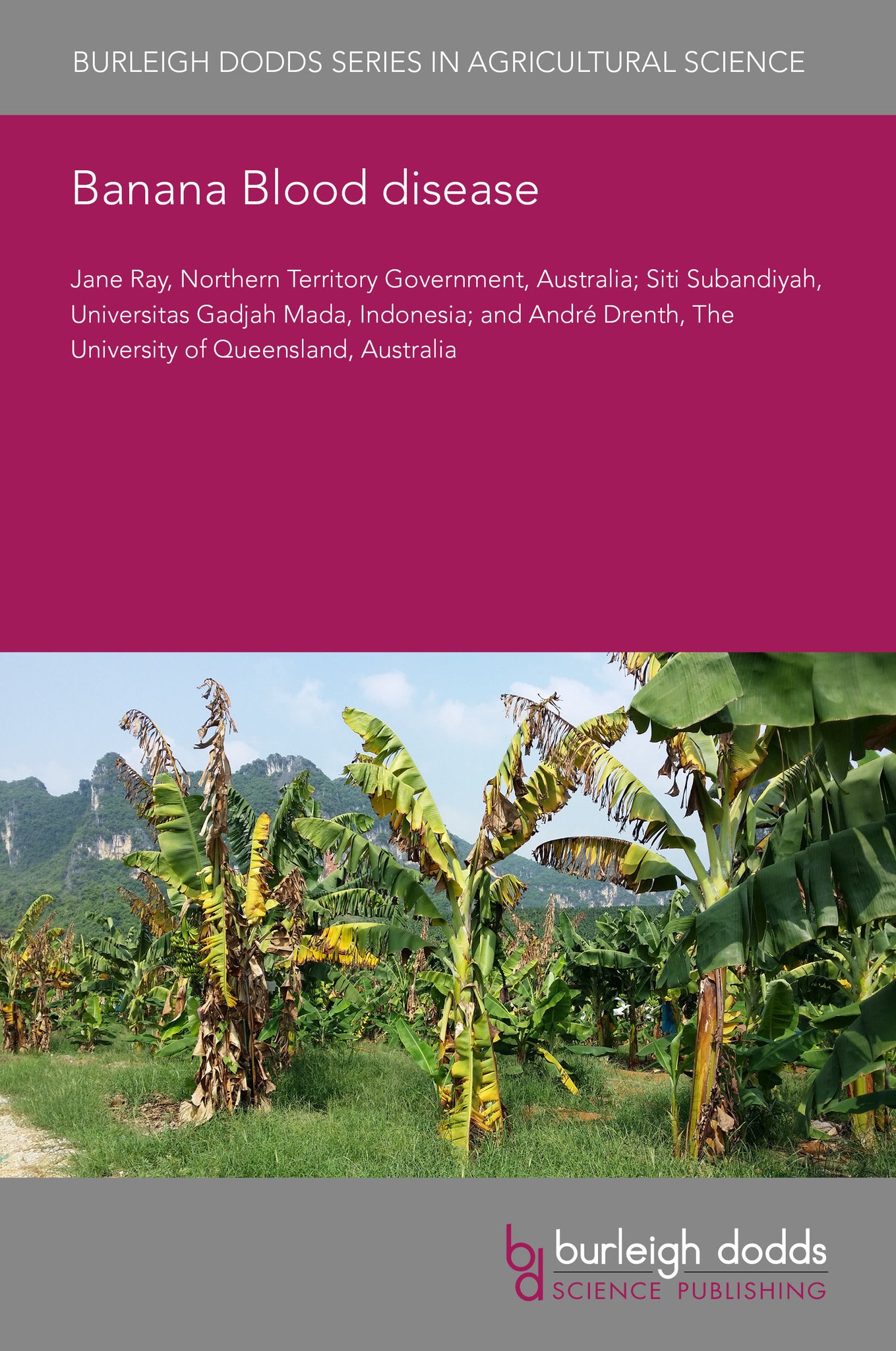We're sorry. An error has occurred
Please cancel or retry.
Banana Blood disease

Some error occured while loading the Quick View. Please close the Quick View and try reloading the page.
Couldn't load pickup availability
- Format:
-
11 March 2024

Blood disease of banana is a bacterial wilt caused by Ralstonia syzygii subsp. celebesensis. The symptoms of Blood disease include wilting, chlorosis and necrosis of leaves, red/brown vascular staining, and pulp-rot of the fruit. The disease was first reported in 1905 from southern Sulawesi and was contained in that area, but has in the last 30 years spread across much of Indonesia and more recently to Malaysia. The disease causes significant crop losses where it occurs. This chapter gives an overview of the pathogen, the disease cycle with special emphasis on the mode of transmission. It has been shown that local dispersal is predominantly through mechanical transmission of the bacterium by insects, birds, bats and tools from diseased to healthy banana plants while long-distance dispersal is through the movement of contaminated planting materials. The chapter concludes with an overview of potential disease management and control options.

TECHNOLOGY & ENGINEERING / Pest Control, Pest control / plant diseases, SCIENCE / Life Sciences / Horticulture, TECHNOLOGY & ENGINEERING / Agriculture / Agronomy / Crop Science, TECHNOLOGY & ENGINEERING / Agriculture / Sustainable Agriculture, TECHNOLOGY & ENGINEERING / Agriculture / Tropical Agriculture, Commercial horticulture, Tropical agriculture, Sustainable agriculture, Agricultural science

- 1 Introduction
- 2 Disease symptoms
- 3 Pathogen characteristics and diagnosis
- 4 Disease cycle and epidemiology
- 5 Occurrence and impact
- 6 Management of Blood disease
- 7 Conclusion and future trends
- 8 Where to look for further information
- 9 References



